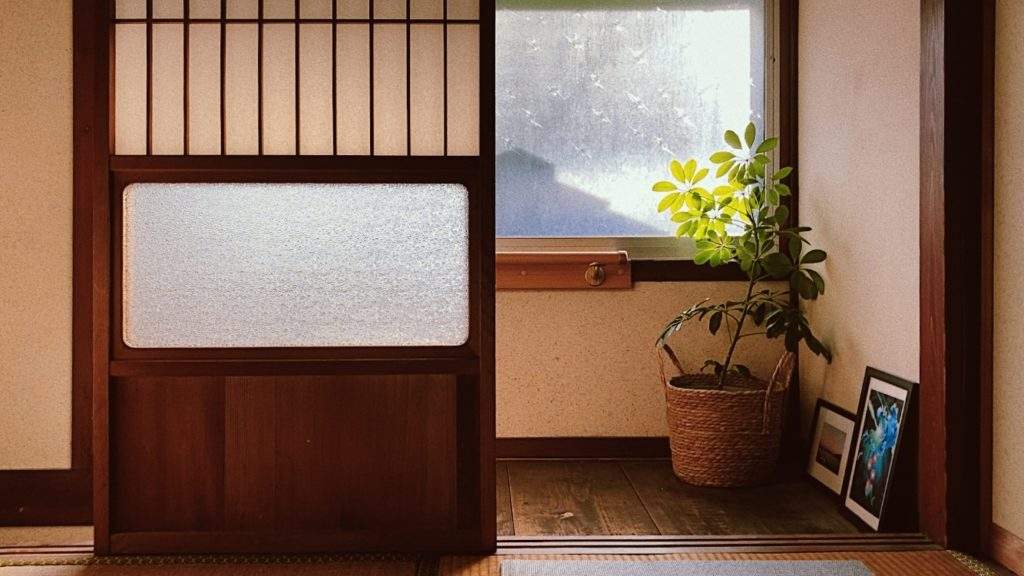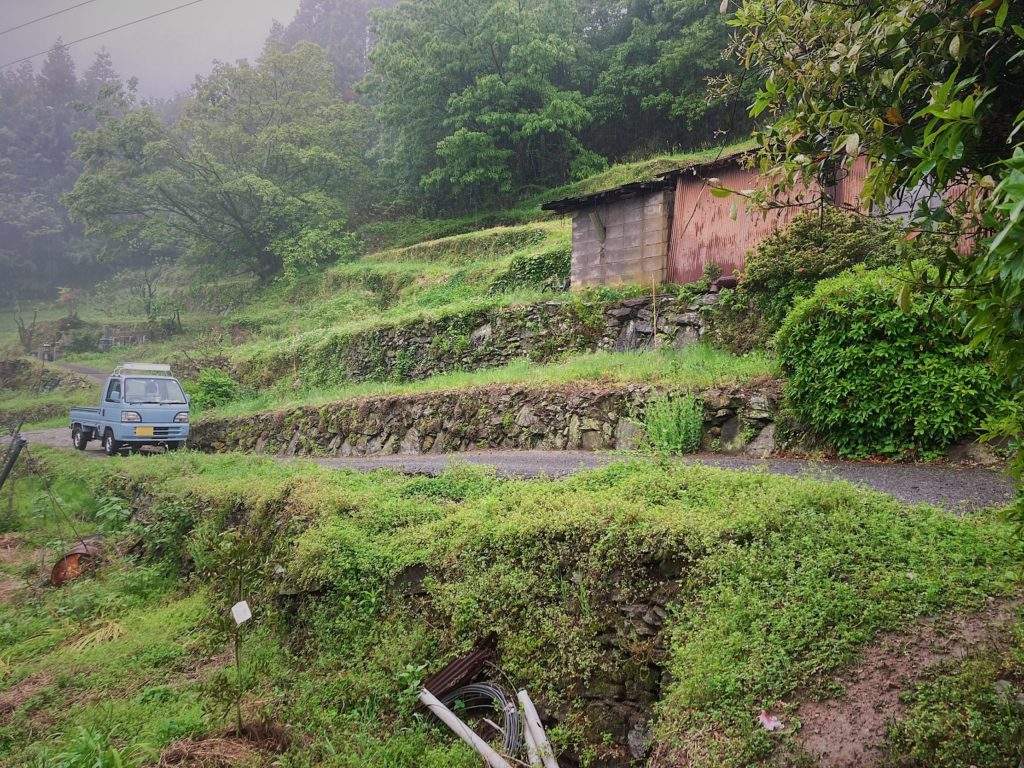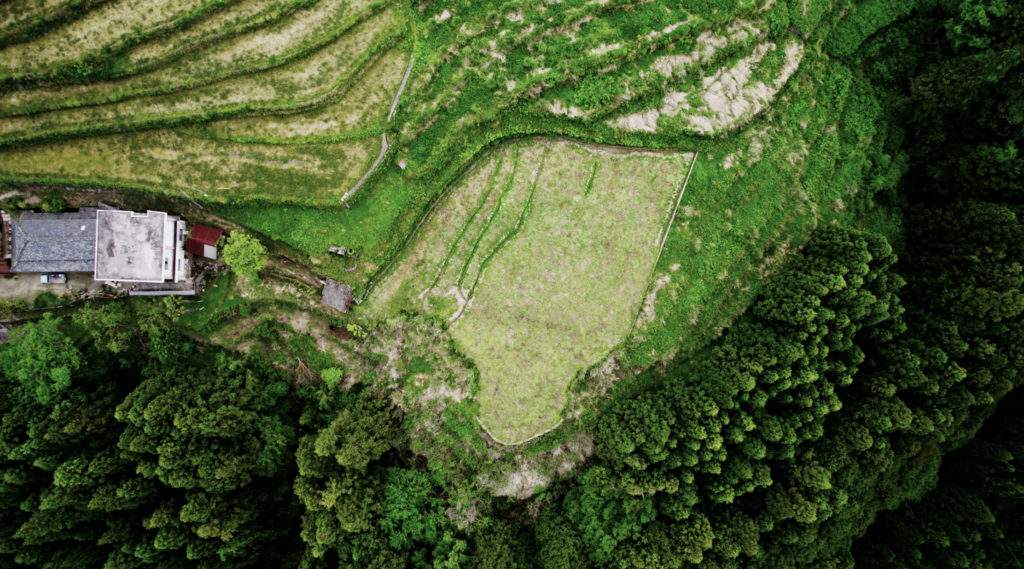A Personal Case Study: My Experiences and Expenses Living in the Japanese Countryside
I’ve lived in a handful of large American cities, but it was living and working in New York City that nearly broke me. My salary was the highest it has ever been and I was saving some money in my 401k, too. But my quality of life hit an all-time low. It was in New York that I decided to up-end things. That is when I decided to start applying to work in the Japanese Countryside. And as a side benefit, I’ve learned that the cost of living in rural Japan can be quite low.
After starting my YouTube channel about life in the inaka (meaning: Japanese Countryside), I’ve gotten a lot of interest regarding living expenses. My wildly low cost of shelter caused a mini-tornado of attention. Is cheap or free housing the easy way out of the rat race? Yes and no. It’s a simple concept, but it’s not necessarily easy. For the right person, living in rural Japan can have many benefits. The cost of living in rural Japan is one of the great benefits.
Rural Japan Life
I now live in Ehime Prefecture on Shikoku island in Japan. Ehime is known for it’s mandarin oranges. Shikoku is known for… well… being remote. The remote-ness is both a pro and a con in my opinion.
The New York Times recently shared a lovely visual essay about the pilgrimage here in Shikoku (a large route of 88 Temples that individuals sometimes hike on a quest for wisdom). In some ways, it’s these remote areas where foreigners might consider to be the most authentically Japanese places. Trades, lifestyles, and culture almost seems disconnected from the rest of Japan, which can be both fascinating and frustrating, especially as a foreign person.
See also → Real Japan
How Much Does It Cost to Live In Japan?
***For Japan cost of living averages (city and countryside), japan-guide.com has a great overview of rough estimates for living costs. There are also some more knitty-gritty articles with per-item comparisons to be found (I found this one on numbeo.com to look about right). But the numbers can vary greatly.
I wanted to share my personal experiences and cost of living in rural Japan. There are many ways a person can live their life. For me, the low cost of living here feels like a welcome whiff of security. Anyway, let’s dive into the numbers…
Japanese Countryside Living Costs Break-down
Housing
My partner currently lives 1.5 hours away from where I work, so I currently split my time between two houses.
My Main House
Now, I live in a Showa-era two-story Japanese kominka house with a courtyard and two small sheds. This house has a 0 yen price tag. Yes, you heard me right. The purchase price of this home is zero. There are taxes and fees at the time of transfer, however I have not yet completed that step yet. There were some hold-ups regarding the inheritance paperwork (that part doesn’t involve me; I’m not related to the homeowner). In the meantime, I have been handing over ¥10,000 JPY a month (about $70/month USD) to someone who helps with maintenance, repairs, and communication with the estate.
Technically, repairs and updates are not included. That being said, my maintenance person tends to just complete small tasks at a low-or-no charge rate.

The Other Old Japanese House(s)
I spend the weekends with my fiancé. He has negotiated the use of a multi-building estate in the mountains. This property has a two-level concrete construction house, a 100-year old folk house (kominka), a large two-level building that used to house silk worm farming, and another large shed where tobacco harvests were dried.
There is non-stop fresh mountain water (slightly jerry-rigged, but undeniably a simple luxury). The property has terraced rock walls where he is building a permaculture food-growing forest with blueberries, fig trees, kiwi, chestnut, shiitake farming, aquatic vegetables, and Japanese wild foraging vegetables.
Mr. Nakamura also rents a kiwi orchard and large greenhouse a short drive away. This estate is a rent-to-own-type situation, except the rent is zero and the purchase price is also zero (after five years of stewardship). This purchase price does not include taxes and fees to assume ownership, which can be prorated across multiple years if needed.
This scenario is not a government-subsidized program. It was decided by the older couple who inherited the home. The five-year rental situation is a positive aspect in my opinion. It allows us to make sure we can manage the property and rural community obligations before assuming full responsibility. Even though the purchase price is low, it’s still a big commitment. I’ll be moving there in the near future.




Shelter cost sub-total: ¥10,000 JPY / month
Includes three large homes + four sheds.
Jump to total →
Driving and Transportation in Japan
My Kei Car
For the majority of my time here, I’ve driven a car that is owned by my employer. While I could use it for both work and personal driving, it had some distance limitations. This car was at zero expense to me. The car, gas and insurance were completely covered by my employer.
I recently purchased a kei car (compact car, good for slim roads in Japan). I opted for something that was both inexpensive and cute, so I bought a black Suzuki Lapin with 75,000 km (46,000 miles) for ¥290,000 yen (~$2000 USD). The shaken (Japanese inspection fee) was up to date and won’t be an issue anytime soon. The insurance is ¥8800 JPY / mo ($60 USD / mo). I spend about ¥8000 JPY / mo on gas ($55 USD / mo).
Car cost sub-total: ¥16,800 JPY / mo
Train / Plane / Ferry / Other
Every once in a while, I take the bullet train or subway over vacation, however this is not a common expense for me. A ferry from the nearest port to Beppu for a hot springs getaway is ¥4200 JPY. Matsuyama Airport has ¥700 JPY/day parking, is extremely easy to navigate, and a round-trip plane ticket from Matsuyama to Tokyo will be around ¥12,000 JPY (~$80 USD).
Other transportation sub-total: ¥4200 JPY / month
Food in Japan
Groceries
I grow a lot of my own food and anticipate even more after I move in with my partner. We often receive produce from neighbors who grow vegetables in their garden plots (hatake in Japanese). People go fishing often here and some people hunt wild boar as well. I’ve received fresh fish, octopus, butchered boar, lettuce, daikon, okra, edamame, shiitake, cucumber, citrus fruits, potato, sweet potato, and more from my neighbors. My grocery expenses are variable depending on how much I give in to my convenience store bento weakness. But to be honest, I give into the weakness most of the time. This means a mega-size coffee, onigiri, lunch protein, iced tea and snack every day. Some days I buy one or two NA Asahi beers.
Groceries sub-total: ¥5000 JPY / month
Convenience store food sub-total: ¥40,000 JPY/month
Eating Out
There aren’t many restaurants, bars or coffee shops in this area. I miss tacos and a good manhattan cocktail, but I manage fine without.
Eating out sub-total: ¥12,000 JPY / month
Utilities in Japan
Electric
The electric bill spikes when I use electric heat or air conditioning. I sometimes use a dehumidifier. Electricity was several times lower at my former apartment (¥1,400 to ¥8,000 / mo) because there was an on-demand hot-water heater. The current house has a large, old boiler.
Electrical sub-total: ¥10,700 JPY / month
Supplemental Heating
I sometimes use a kerosene Aladdin stove heater. You can also cook on top. I only bought kerosene twice last winter.
Supplemental heating sub-total: ¥2600 JPY / year
Water
Water sub-total: ¥1140 JPY / month
Gas
I have a gas range for cooking. The gas company exchanges out propane tanks as needed.
Gas sub-total: ¥2285 JPY / month
Internet
To be honest, I don’t have the internet. Yes, I have a YouTube channel, a website, and an instagram account, but I don’t have the internet. This is partially because sometimes it is just frustrating to finish enrollment paperwork as a foreigner (My name has roman letters and a middle name. It’s like throwing a wrench into the gears. I don’t fit the four-character expectations). I had pocket wifi for a while and paid overage fees sometimes, so I just ended up canceling it. I use the internet at work or at my partner’s house. When I had internet at my former apartment, it was ¥5,000 / month.
Internet sub-total: let’s say ¥5,000 JPY / month for good measure.
Phone
I use Sakura mobile. I have a 25GB/month plan. I rarely make voice calls.
Phone sub-total: ¥4,400 JPY / month
Leisure
Entertainment
Home improvement and working on my creative projects are my entertainment. I don’t have a TV, but I went to the Sailor Moon movie last week. I sometimes buy books. When I went to Tokyo last time, I enjoyed Team Lab Planets and went to the Mori Art Museum. Otherwise, I’m pretty much a homebody.
Entertainment sub-total: ¥3000 JPY / month
Shopping
Clothing and Shoes
I don’t consider myself a big shopper. When I buy clothes, it’s from UNIQLO, muji, or the second-hand store. I bought a pair of shoes from Allbirds Japan.
Clothing sub-total: ¥70,000 JPY / year
Home items
I was an interior designer in America. I like DIY home improvement and nice linens. I’m a sucker for house plants.
Home items sub-total: ¥10,000 JPY / month
Other
Healthcare / Dental
This is deducted from my salary. I visited the dentist twice this year and went to the doctor once. We have physicals done at the town office, which includes checking heart, eyes, blood, weight, urinalysis and more. A health report card is awarded with health grades in each area.
Here is a calculator to help estimate National Health Insurance Premiums based on location and income (Sorry! It’s only in Japanese).
Last year, I sprained my ankle. I couldn’t find my national health coverage card and was very stressed. I waited five minutes for x-rays. The kind nurses let me come back later after I found my card. Out of pocket: ¥1700. Celebratory convenience store cake, anyone?
Healthcare out-of-pocket sub-total: ¥2400 JPY / year
Dental out-of-pocket sub-total: ¥3400 JPY / year
Community dues
There is a neighborhood fee.
Community dues sub-total: ¥12,000 JPY / year
My Rural Japan Life Cost of Living Summary
Monthly Expenses w/ US Dollar Conversions
| Shelter | ¥10,000 | $69 |
| Car | ¥16,800 | $116 |
| Other transportation | ¥4200 | $29 |
| Groceries | ¥5000 | $34 |
| Convenience store food | ¥40,000 | $277 |
| Eating out | ¥12,000 | $83 |
| Electrical | ¥10,700 | $74 |
| Supplemental heating | ¥217 | $2 |
| Water | ¥1140 | $8 |
| Gas | ¥2285 | $16 |
| Internet | ¥5000 | $35 |
| Phone | ¥4400 | $30 |
| Entertainment | ¥3000 | $21 |
| Clothing | ¥5833 | $40 |
| Home items | ¥10,000 | $69 |
| Healthcare out-of-pocket | ¥200 | $1 |
| Dental out-of-pocket | ¥283 | $2 |
| Community dues | ¥1000 | $7 |
Total expenses: ¥132,058 JPY per month
($914 USD / $1375 AUD / €842 Euro per month)*
*I’ve done my best to add up and estimate numbers to the best of my ability, but note that I usually pay cash and have probably forgotten something somewhere. Use this for your entertainment and general informational purposes only, please. 🙂 This doesn’t include large infrequent expenses such as moving, buying a car, or buying furniture/appliances.
The housing cost is so low! What’s the catch?
Here are some of them:
- Based on what I’ve observed, wildly affordable housing “deals” require that individuals are embedded and active in a community. This can be a lot of work, from cutting weeds to cleaning community spaces to performing at festivals. It can mean checking your ego and apologizing for things you don’t understand. In America, not apologizing is a sort of virtue. That simply won’t fly here.
- Typically, the cheapest housing will not meet western standards for thermal comfort, seismic safety, electrical safety, and more.
- Housing costs generally don’t include maintenance, improvements or appliances. For example, you won’t be able to call up the landlord if something breaks.
- The countryside is full of bugs. Big, scary, sometimes poisonous ones. Beware the mukade (large, icky Japanese centipede)!
- Rural Japan is experiencing rapid depopulation, which has affected the availability of amenities.
Is Japan expensive?
It’s highly variable! It will depend on your location and lifestyle. Big cities can be very expensive. Remote areas can be wildly affordable. Do you enjoy gardening, agriculture, old tradition and culture? Can you be flexible and find new ways to entertain yourself? Will you learn the Japanese language? Are you willing to try and accommodate a very different culture? If so, you might want to consider this lifestyle and the low cost of living in rural Japan.
Does Japan have a minimum income requirement for foreigners?
Japan does not explicitly have a minimum income requirement for foreign people, however there are income requirements embedded in visa eligibility. For example,
- Business visas require substantial liquid assets, plus additional business-related requirements.
- Spouse-of-Japanese visas require that the couple makes at least 3,000,000 yen (~$20,000 USD) a year.
- Work visas require that you… well… work for someone. And the employment options aren’t what you might be used to.
- There are not visas for retirement.
- There are not visas for remote work (if the parent company is outside of Japan). ***Update 6/5/2024: There is a digital nomad special visa, however it only last 6 months and is not renewable.
*But please note that I am not a legal expert, and these are ballpark numbers. Please refer to this directory for proper legal and Japanese government resources that can answer visa questions.
Conclusion: Cost of Living in Rural Japan vs. Quality of Life
Moving to the Japanese countryside. Is it the easy way out of the rat race? Well, it takes the right person. Food and shelter are at a record low for me here in rural Japan. My life is still stressful, but in a different way. There are many obstacles to manage. I’m taking on my challenges one at a time. But a high price of rent is not going to be a concern for me any time soon. For now, I’ll enjoy the low cost of living in rural Japan.
But this is also important: What I’ve Learned Living in Rural Japan & What To Expect
Like this Rural Japan Life Article? Pin it!









